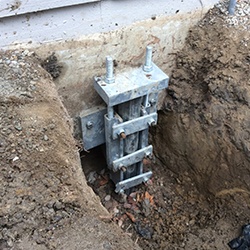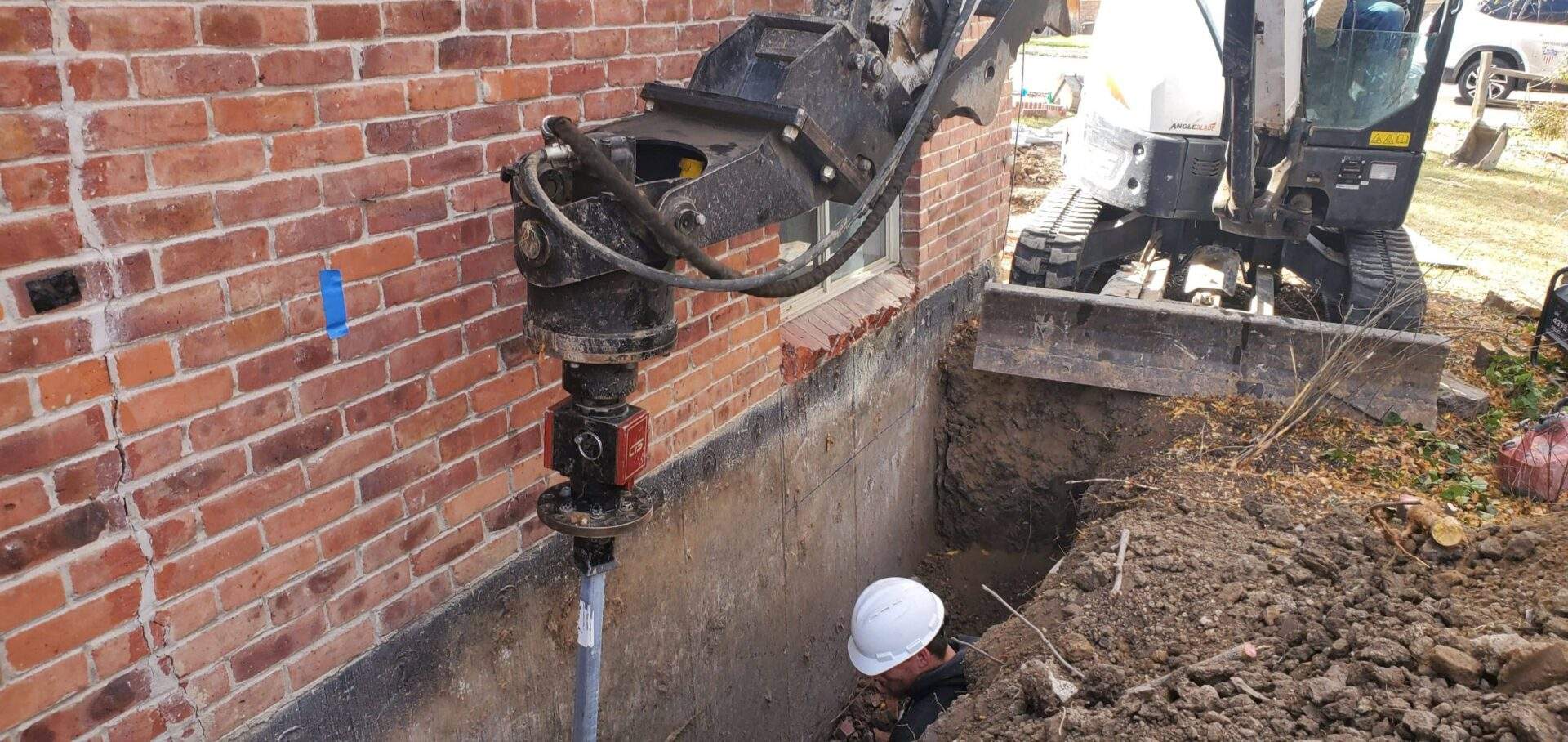Pier and Beam Foundation Repair Dallas: Tailored Solutions for Raised Foundations
Foundation Repair Service Techniques: A Thorough Overview
Foundation Repair Techniques: An Extensive Review
Structure issues can trigger substantial architectural damage to buildings, jeopardizing their security and safety and security. Recognizing foundation repair techniques is vital for designers, contractors, and homeowners included in building and construction and maintenance tasks. This comprehensive overview provides a comprehensive exam of numerous techniques utilized to deal with foundation issues, making certain a strong and safe and secure structure for any framework.
The guide covers important strategies such as slab jacking, pier and beam support, basement wall surface anchoring, dirt stabilization, and structure underpinning. Each strategy is discussed comprehensive, highlighting its function, effectiveness, and application. FCS Foundation Repair Dallas concrete foundation services. In addition, the review talks about aspects to take into consideration when selecting the proper fixing method, such as soil conditions, building kind, and financial restraints
Whether you are a property owner looking for to deal with structure problems or a specialist in the construction market, this detailed review acts as an important resource, offering necessary expertise and insights into foundation repair service methods.
Piece Jacking
Piece jacking, commonly used as a trustworthy and frequently used method, increases sunken concrete slabs by injecting a stabilizing material underneath, effectively restoring the foundation to its initial degree. This strategy is generally made use of in situations where the ground has actually resolved or moved, triggering concrete slabs to sink or end up being irregular. Piece jacking is a cost-effective alternative to entirely changing the concrete, as it deals with the root cause of the problem and provides a durable option.

One of the significant benefits of piece jacking is its minimally intrusive nature. The tiny openings drilled for the injection procedure can quickly be covered, leaving no noticeable indications of repair work. Additionally, slab jacking can be finished promptly, frequently within a day, reducing disruption to the home owner. This technique appropriates for a variety of concrete frameworks, consisting of driveways, sidewalks, patios, and cellar floors.
Pier and Beam Of Light Reinforcement
Another generally utilized strategy in foundation repair is pier and beam of light reinforcement, which constructs upon the previous technique of piece jacking to supply additional structural assistance and stability to the structure. When the foundation has received considerable damages., this technique is especially useful in areas with weak dirt problems or.
Pier and light beam reinforcement entails installing upright concrete or steel piers under the foundation to move the weight of the framework to deeper, extra stable soil layers. These piers are purposefully positioned along the perimeter of the structure and at indoor load-bearing walls to uniformly disperse the load and avoid additional negotiation.
To reinforce the beam of lights, extra steel or concrete assistances are included to strengthen and stabilize the existing beam of lights. This is done by affixing steel brackets or beams to the existing beams and protecting them with screws or various other bolts. The reinforcement materials are selected based upon the certain demands of the structure and the level of the damages.
Pier and beam reinforcement not only provides immediate support to the foundation but also helps to avoid future settlement and architectural damages. FCS Foundation Repair Dallas Concrete Pier and Beam Repair. By redistributing the load and transferring it to more powerful dirt layers, this method makes certain the long-term stability and honesty of the structure
Basement Wall Surface Anchoring
Cellar wall surface anchoring is an important technique utilized in structure fixing to improve the security and structural stability of the foundation, particularly in locations susceptible to soil motion and basement wall surface failure. When the dirt around a structure experiences extreme moisture or shifts as a result of geological aspects, it can exert substantial stress on the basement wall surfaces, triggering them to break, bow, and even collapse. This can cause major architectural problems and jeopardize the security of the entire structure.
Basement wall surface anchoring entails setting up specialized supports or helical tiebacks into the ground surrounding to the foundation walls. These supports are created to pass through deep into stable soil or bedrock, developing a strong link between the ground and the foundation. By dispersing the tons of the structure evenly and withstanding the side pressures applied by the dirt, basement wall surface securing offers added support and protects against additional activity or wear and tear of the wall surfaces.
There are different kinds of cellar wall securing systems offered, consisting of steel wall surface anchors, helical tiebacks, and carbon fiber bands. The choice of system depends upon variables such as the seriousness of the wall motion, dirt conditions, and the certain demands of the foundation. Expert structure repair service providers evaluate these aspects and advise the most suitable anchoring remedy for each special scenario.
Dirt Stablizing
To address the challenges of soil activity and make certain the stability of foundations, soil stabilization methods are utilized in structure fixing. Dirt stabilization refers to the process of improving the buildings of the soil to boost its load-bearing capability and minimize its sensitivity to activity. There are numerous methods used for dirt stabilization, each customized to the specific characteristics of the soil and the requirements of the foundation.

Mechanical stabilization is one more extensively used method that includes the physical alteration of the dirt. This method includes approaches such as compaction, which increases the density of the dirt, and dirt substitute, which entails removing weak soil and replacing it with even more secure products.
Additionally, soil stabilization may likewise include making use of geosynthetic materials like geocells, geogrids, or geotextiles. These materials are placed within the soil to reinforce it and distribute the load more evenly, minimizing the danger of negotiation or try this site heave.
Foundation Base
Exactly how can foundation base successfully attend to the obstacles of dirt motion and make sure the stability of structures? Foundation support is a technique used to reinforce and maintain Click This Link existing structures that have been affected by soil activity. This method involves extending the depth or breadth of the foundation to a more stable dirt layer or redistributing the load throughout a bigger area, thus improving its load-bearing ability.
There are a number of kinds of foundation underpinning techniques generally utilized in the industry. One method is mass concrete support, where new concrete is poured beneath the existing structure to enhance its depth and security. One more strategy is light beam and base foundation, which involves creating strengthened concrete beams under the existing foundation, moving the tons to deeper, extra steady dirts.
Helical stack underpinning is additionally generally made use of. It includes mounting helical stacks into the ground underneath the foundation, which supply additional assistance and stability. These heaps are screwed into the dirt and can be used to move the load of the structure to even more experienced soil layers.
Verdict
To conclude, structure repair work strategies play a crucial duty in maintaining the architectural honesty of buildings. Piece jacking, pier and light beam reinforcement, cellar wall surface anchoring, dirt stabilization, and structure base are all reliable techniques made use of to deal with structure concerns. By executing these strategies, residential property owners can make sure the security and safety of their structures pier beam house plans for many years ahead.
Basement wall anchoring is an important method utilized in structure fixing to enhance the stability and structural stability of the foundation, specifically in areas prone to soil motion and basement wall surface failing.To resolve the obstacles of soil movement and guarantee the stability of foundations, soil stabilization methods are used in foundation repair work. There are a number of techniques utilized for soil stabilization, each tailored to the particular qualities of the soil and the requirements of the foundation.
Foundation underpinning is a technique used to reinforce and maintain existing structures that have actually been influenced by dirt motion. Slab jacking, pier and beam support, cellar wall surface anchoring, soil stabilization, and foundation underpinning are all reliable approaches utilized to attend to structure issues.